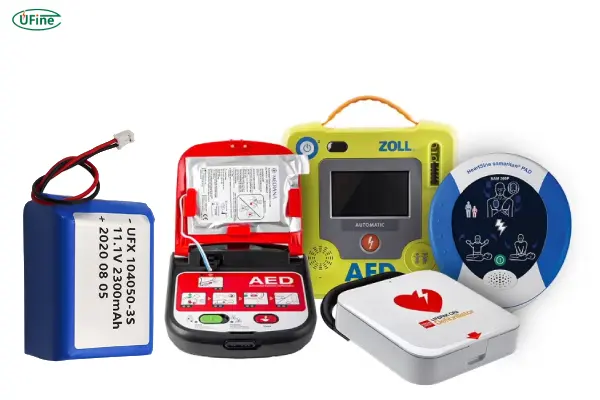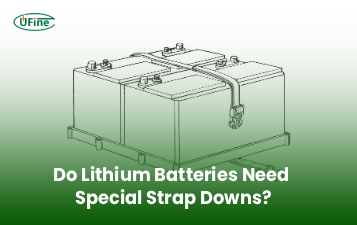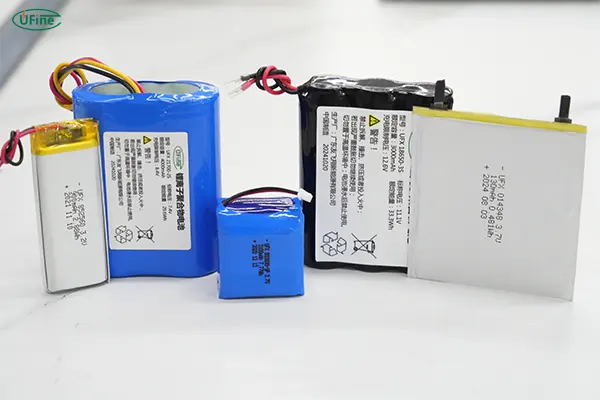
- Part 1. Why defibrillator batteries matter more than you think
- Part 2. Types of defibrillators that use batteries
- Part 3. Battery technologies used in defibrillators
- Part 4. Core performance metrics for defibrillator batteries
- Part 5. Battery design requirements in medical applications
- Part 6. Battery maintenance and monitoring in clinical environments
- Part 7. The role of custom battery packs in modern defibrillators
- Part 8. Replacement challenges and common compatibility issues
- Part 9. Recycling and disposal of medical lithium batteries
- Part 10. How to source reliable defibrillator batteries
- Part 11. Final thoughts
- Part 12. FAQs
When seconds mean the difference between life and death, a defibrillator is a vital tool. But no matter how advanced the technology, a defibrillator is only as reliable as the battery that powers it. From hospitals and ambulances to public defibrillator stations and implantable devices, defibrillator batteries are at the core of every successful intervention.
In this guide, we’ll walk through everything you need to know about defibrillator batteries—types, technologies, maintenance, replacement, and sourcing solutions. Whether you’re a medical professional, a hospital technician, or an OEM manufacturer, this article will help you understand the heartbeat behind the shock.
Part 1. Why defibrillator batteries matter more than you think

Defibrillators deliver an electric shock to reset abnormal heart rhythms like ventricular fibrillation. This function depends entirely on the battery’s ability to deliver high-voltage energy instantly, without delay or error.
A weak, drained, or incompatible battery doesn’t just reduce performance—it can prevent the defibrillator from working altogether. For this reason, medical batteries are not your average cells. They are designed with extremely high reliability, safety, and durability standards.
And because many defibrillators are used in unpredictable or high-stress environments, their batteries must perform without fail in ambulances, airplanes, public locations, and critical care units.
Part 2. Types of defibrillators that use batteries
Defibrillator batteries vary greatly depending on the type of device they power. Let’s break it down:
A. Automated External Defibrillators (AEDs)
- Used in public places (airports, gyms, schools)
- Designed for use by non-medical personnel
- Typically use non-rechargeable lithium batteries with 4–5 years of standby life
B. Manual External Defibrillators
- Found in hospitals and ambulances
- Operated by healthcare professionals
- Often powered by rechargeable lithium-ion batteries to support frequent usage
C. Wearable Cardioverter Defibrillators (WCDs)
- For patients at high risk of cardiac arrest
- Use compact rechargeable batteries
- Require frequent charging and safe, portable design
D. Implantable Cardioverter Defibrillators (ICDs)
- Implanted under the skin
- Operate on specialized long-life lithium batteries
- Batteries must last 5–10 years without replacement
Each application has unique battery requirements—a reminder that reliability and suitability are paramount.
Part 3. Battery technologies used in defibrillators
Different defibrillators use different types of lithium-based batteries. Here’s a closer look:
Lithium Manganese Dioxide (LiMnO₂)
- Common in AEDs
- High energy density
- Long shelf and standby life
- Non-rechargeable
Lithium-ion (Li-ion)
- Found in manual defibrillators and WCDs
- Rechargeable
- Lightweight and compact
- Requires built-in protection circuits
Lithium Polymer (LiPo)
- Used in custom medical applications
- Flexible in size and shape
- Excellent energy-to-weight ratio
- Available in ultra-thin or high-rate discharge designs
These battery chemistries are selected not only for performance but for their safety, stability, and ability to deliver rapid energy during defibrillation.
Ufine Battery manufactures high-performance lithium batteries—including Li-ion and LiPo options—customized for defibrillators and other critical medical equipment. Wew offer flexible battery shapes, voltages, and capacities to meet demanding clinical or OEM needs. Contact Ufine Battery to explore custom solutions tailored to your application.
Part 4. Core performance metrics for defibrillator batteries
Choosing or replacing a defibrillator battery involves evaluating key specifications:
- Voltage: Typically 12V to 18V, depending on the device model
- Energy Capacity: Measured in mAh or watt-hours (Wh), determining how many shocks it can deliver
- Shock Output: Some batteries support over 200 full-energy shocks per charge or battery life
- Charge Time: Time needed to power up and deliver a shock (critical in emergencies)
- Cycle Life: Especially important for rechargeable batteries (300–1,000 cycles is common)
- Self-Test Capability: Batteries should support device self-diagnostics
- Standby Life: Often 3–5 years without use (for AEDs)
High-end medical batteries are also tested for vibration, impact, electromagnetic interference, and temperature tolerance to ensure performance under real-world conditions.
Part 5. Battery design requirements in medical applications
Battery design for defibrillators involves strict regulatory and performance criteria. Key design considerations include:
- Fail-Safe Operation: Batteries must operate even in partial failure conditions
- Redundancy: Some systems use dual battery packs for reliability
- Temperature Tolerance: Must work in environments ranging from −20°C to 60°C
- Electromagnetic Compatibility: Avoid interference with other medical equipment
- Leak-Proof Construction: Critical to avoid chemical exposure
- IEC/ISO Certification: Batteries must meet international medical safety standards (e.g., IEC 62133, ISO 13485)
Custom battery manufacturers like Ufine Battery specialize in these design challenges, providing bespoke solutions that adhere to medical certification requirements. Whether you need a battery for a new defibrillator model or to replace a discontinued one, Ufine can deliver a safe and tested solution.
Part 6. Battery maintenance and monitoring in clinical environments
Even the best batteries require regular inspection and care. In clinical and EMS environments, this is part of essential protocol.
Best Practices for Battery Maintenance:
- Daily or weekly visual checks for indicator lights or alerts
- Monthly functional tests to check charge and shock delivery readiness
- Scheduled replacements even if the battery hasn’t been used (based on manufacturer’s timeline)
- Avoid deep discharge in rechargeable systems
- Keep battery contacts clean and dry
Many newer defibrillators offer software-based battery health monitoring, tracking usage history, charge level, and replacement reminders. Some systems even notify central maintenance teams when a battery drops below safe levels.
Part 7. The role of custom battery packs in modern defibrillators
Off-the-shelf battery packs don’t always fit the unique needs of OEMs or custom medical devices. That’s where custom battery packs come in.
These solutions are tailored for:
- Unique device form factors
- Uncommon voltage or capacity requirements
- Wireless battery monitoring integration
- Extreme environments or portable use
Custom packs often include:
- Battery Management Systems (BMS)
- Smart chips for diagnostics
- Fire-retardant housings
- Tamper-proof sealing
If your defibrillator or wearable cardiac device needs a special shape, thin size, or long standby power, Ufine Battery can develop custom lithium battery solutions to your specs. From prototypes to bulk manufacturing, they support full customization backed by decades of experience.
Part 8. Replacement challenges and common compatibility issues
Battery replacement isn’t always plug-and-play. There are several issues to be aware of:
Common Problems:
- Discontinued models or rare battery formats
- Counterfeit or unsafe third-party replacements
- Voltage mismatches that could damage the defibrillator
- Certification lapses in unverified batteries
- Software incompatibility with smart defibrillators
To avoid risks, always:
- Use OEM or certified compatible batteries
- Verify specs against device documentation
- Consult battery professionals for discontinued or custom units
When sourcing reliable replacements or equivalents, Ufine Battery can engineer compatible battery packs that match original specifications and meet all necessary safety standards.
Part 9. Recycling and disposal of medical lithium batteries
Defibrillator batteries, especially those made from lithium chemistries, must be disposed of responsibly. Improper disposal can result in:
- Fire or chemical hazard
- Environmental pollution
- Legal liability under medical waste regulations
Safe Disposal Guidelines:
- Follow local laws and medical e-waste protocols
- Use certified battery recycling services
- Never incinerate, crush, or expose to water
- Label expired or used batteries clearly
- For implantable or wearable device batteries, partner with biomedical waste handlers
Many hospitals and clinics work with battery recyclers who track chain-of-custody, ensuring every lithium cell is handled properly.
Part 10. How to source reliable defibrillator batteries
With so many options—and high stakes—you need a trusted battery partner that understands both performance and compliance.
Here’s what to look for in a supplier:
- Experience in medical-grade lithium battery manufacturing
- Ability to customize sizes, voltages, and chemistries
- Proven certification and quality control processes
- Responsive support and engineering collaboration
That’s why many device makers and medical suppliers choose Ufine Battery, a leading lithium battery manufacturer based in China. With a portfolio that includes:
- Lithium polymer batteries
- LiFePO₄ cells
- 18650 cylindrical batteries
- High-temperature and high-discharge rate options
Ufine Battery delivers safe, long-lasting, and tailored battery solutions for the most demanding applications. If you’re designing or managing defibrillator systems, reach out to our team for expert advice and production support.
Part 11. Final thoughts
A defibrillator without a reliable battery is like a car without fuel—useless in a moment of need. Whether you’re working in healthcare, emergency services, or medical device manufacturing, understanding defibrillator batteries is essential.
If you’re looking for a trusted battery partner to support your device development, fleet replacement, or custom medical battery needs, Ufine Battery is here to help. With rich experience in lithium battery design, testing, and production, we deliver life-ready energy solutions for every heartbeat that depends on it. Contact our team to request a custom quote or technical consultation.
Part 12. FAQs
Are defibrillator batteries rechargeable?
Some are—particularly those in manual defibrillators or wearables. AEDs typically use non-rechargeable lithium packs.
How often should I replace a defibrillator battery?
Follow the manufacturer’s guidelines—usually every 2–5 years, or immediately after use.
Can I use any lithium battery in a defibrillator?
No. Only use batteries that are specifically approved for your defibrillator model.
What if I can’t find a compatible replacement?
Contact a custom battery manufacturer like Ufine Battery to replicate or upgrade the original pack safely.
Are third-party batteries safe?
Only if they meet all safety and certification standards. Avoid unknown brands or generic imports.
Related Tags:
More Articles

Do Lithium Batteries Require Special Strap Downs? (Safety + Vibration Control)
Discover why lithium batteries require special strap downs to prevent vibration damage, terminal stress, and internal component issues.
Battery Strap Down Safety Tips: Preventing Vibration Damage and Terminal Stress
Follow these expert battery strap down safety tips to prevent vibration damage, terminal stress, and ensure LiFePO4 battery longevity.
How to Choose a Good 18650 Battery with Reliable Quality?
Battery quality defines performance and safety. Ufine Battery shares how to source good 18650 batteries and avoid unstable suppliers.
Can I Use a Universal Battery Strap Down on LiFePO4 Batteries? (Compatibility Guide)
Learn whether universal battery strap downs are compatible with LiFePO4 batteries, and how to install them safely for vibration control.
Battery Strap Down vs Battery Hold-Down Bracket: What’s the Difference?
Compare battery strap downs and hold-down brackets. Learn key differences, installation tips, and which is safer for lithium batteries.



